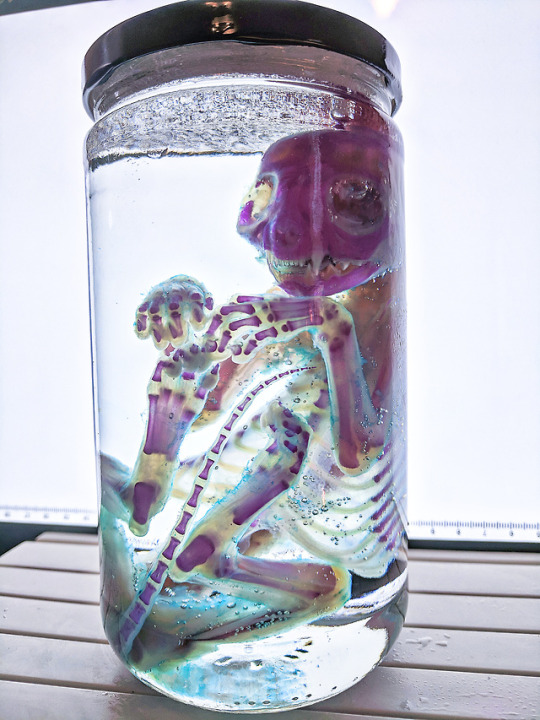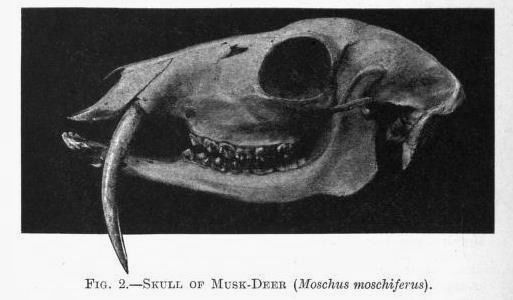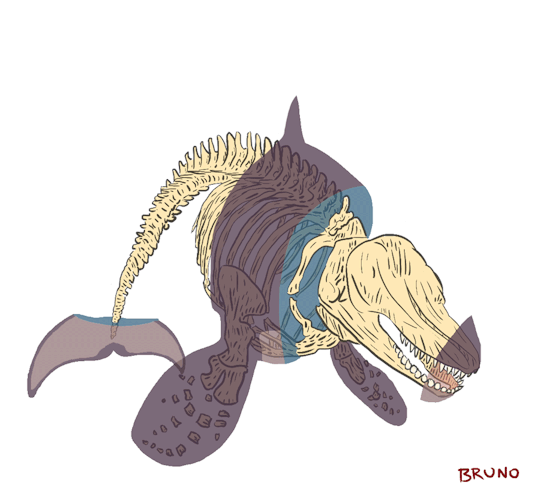Nicky / 24 / NB / Side blog / BS in Zoology / Currently applying to grad school. I follow from my main blog, ginkqo!
Don't wanna be here? Send us removal request.
Text
musk is going to die in a Tesla explosion in 6 months after sticking his nose where it doesn't belong and we will never get a conclusive answer on whether it was a CIA car bomb or just a normal Tesla malfunction
189K notes
·
View notes
Photo

Fossilized in-ground Stegosaurus, Houston Museum of Natural Science Credit: Houston Museum
571 notes
·
View notes
Text



Canine Distemper
• Other names: Hard pad disease, old dog encephalitis
• Cause: canine distemper virus (CDV), a paramyxovirus closely related to the viruses of measles and rinderpest. [Note: canine distemper virus is unrelated to the virus which causes feline distemper]
• Species: dogs, ferrets, wild canids (foxes, wolves, coyotes, raccoon dogs), mink, wolverines, martens, skunks, badgers, otters, raccoons, coatimundi, binturong, palm civets, red pandas, bears, Asian elephants, Japanese monkeys, seals, and large felids (lions, tigers, leopards).
• Transmission: Highly contagious! Seen most commonly in environments such as animal shelters, rescues, and pet stores where large numbers of unvaccinated or recently vaccinated dogs are housed together. Direct contact, airborne via aerosol droplets from coughs and sneezes, fomites (such as food and water dishes, equipment, handlers’ hands and clothes). Transplacental from infected mother to unborn pups. Infected animals can begin shedding the virus up to 5 days *before* clinical signs appear and may continue to shed the virus for up to 4 months after recovering from symptoms. Puppies less than 4 months old and unvaccinated dogs at highest risk.
• Signs: Some animals may be asymptomatic or subclinical carriers. Diphasic fever, diarrhea, vomiting, a thick yellow discharge from the eyes and nose, cough, pneumonia, encephalomyelitis causing neurological signs (neck pain, myoclonus, chorea, flexor spasm, hyperkinesia, “chewing-gum” seizures, convulsions with salivation; circling, head tilt, nystagmus, paresis, paralysis, seizures; due to neurological signs, rabies may also be considered as a diagnosis, particularly in wildlife). Additionally, ferrets develop a dermatitis on the face and inguinal region, as well as erythema of the mucous membranes. Leukopenia, especially lymphopenia. Anorexia and lethargy during febrile periods. In some dogs the acute disease is so mild as to be unnoticed, only for the dog to develop severe neurological signs months later. Often fatal (mortality reaches nearly 100% in some species, such as ferrets). If dogs survive the acute phase, may develop hyperkeratosis of the footpads and epithelium of the nasal planum, and enamel hypoplasia in incompletely erupted teeth. If dogs recover, they usually have persistent nervous muscular twitches (chorea) and/or recurrent seizures for the rest of their lives.
“old dog encephalitis” – brain inflammation that may occur in dogs who had distemper many years ago and appeared to have recovered, only to break with neurological distemper once they reach old age. Brain lesions in these dogs are identical to those in dogs who progressed to neurological signs during or soon after the acute phase.
On necropsy, changes such as thymic atrophy (especially in young puppies), necrosis of lymphatic tissues, interstitial pneumonia, cytoplasmic and intranuclear inclusion bodies in respiratory, urinary, and GI epithelium, neuronal degeneration, gliosis, noninflammatory demyelination, perivascular cuffing, nonsuppurative leptomeningitis, and intranuclear inclusion bodies predominately within glial cells may be seen.
• Diagnosis:
- Can be difficult and expensive to confirm via lab testing, therefore diagnosis is often based on history and clinical signs, especially in a shelter setting or when owner finances are a concern.
- Lab tests have a high rate of false negatives, and some can also result in false positives when the patient has had a recent distemper vaccination.
- IFA or reverse transcriptase (RT) PCR performed on smears of conjunctival, tracheal, vaginal, or other epithelium, the buffy coat of the blood, urine sediment, or bone marrow aspirates.
- IFA or fluorescent in situ hybridization for viral DNA on biopsies from the footpads or from the haired skin of the dorsal neck
- Antibody titers or ELISA can be performed on CSF and compared with peripheral blood; a relatively higher level in the CSF is typical of natural infection versus vaccination.
- At necropsy, diagnosis is usually confirmed by histologic lesions and/or IFA.
• Treatment: No specific treatment. Supportive care, such as IV fluids, antiemetics, and anti-seizure medications, to alleviate symptoms. Antibiotics to treat secondary bacterial infections (common with distemper). Strict isolation from susceptible species to prevent disease spread.
•Prevention: Vaccination according to an evidence-based protocol, such as that published by AAHA. (“Prior to widespread vaccination, distemper was the scourge of the canine community, wiping out entire towns of pet dogs. Today, distemper is a rare disease except in the shelter, rescue, and pet store world.”) The vaccine takes 3-5 days to become effective in adult dogs, and due to maternal antibodies puppies should not be considered vaccinated until they’ve finished the entire course of puppy vaccines; dogs exposed to the virus before the vaccine is effective in their bodies may still contract the disease.
DO NOT USE THE CANINE VACCINE IN FERRETS – FATAL! Only give ferrets vaccines licensed for ferrets!
- Isolation of infected animals until period of viral shedding has passed
- Following good sanitation protocols. The virus does not survive more than a few hours in the environment at room temperature, and is easily inactivated by bleach or quaternary ammonium disinfectants.
Sources:
• Distemper in Dogs https://vcahospitals.com/know-your-pet/distemper-in-dogs
• Canine Distemper Overview https://www.merckvetmanual.com/generalized-conditions/canine-distemper/canine-distemper-overview
• Canine Distemper https://www.avma.org/public/PetCare/Pages/Canine-Distemper.aspx
• FAQ about Canine Distemper https://vet.osu.edu/about-us/news/frequently-asked-questions-about-canine-distemper
• Distemper in Dogs https://veterinarypartner.vin.com/default.aspx?pid=19239&id=4952099
• Canine Distemper Virus https://www.cliniciansbrief.com/article/canine-distemper-virus (Image source)
• Infectious Diseases of Ferrets https://www.merckvetmanual.com/exotic-and-laboratory-animals/ferrets/infectious-diseases-of-ferrets (image source)
• Canine Distemper: What You Need to Know to Protect Your Dog Now https://www.kingmanveterinarian.com/dr-andrews-notes/canine-distemper-what-you-need-to-know-to-protect-your-dog-now/attachment/staupe2/ (image source)
107 notes
·
View notes
Photo




Pelvis Comparison.
In case anyone wanted to be able to tell the difference between an equine and a bovine pelvis (and a sheep there at the top)!
Cows have more square-shaped pelvises than horses, which are more concave along the sides. And it’s kind of odd tell but every equine pelvis I’ve ever had was shaped so that it will stay propped up on its own if stood upright. Cow pelvises always tip over.
As with humans, you can sex an animal by its pelvis. Female cows and horses have significantly wider pelvises than male animals to allow for the birth of their young. The horse pelvis in these photos is most likely from an old mare and the cow pelvis is most likely from a bull.
684 notes
·
View notes
Photo

Diaphonized Siamese kitten Gore/Snuff blogs do not interact.
4K notes
·
View notes
Text

Got my gator in! It’s very hard to capture just how big he is so here’s a better idea.
(Ps I’m a bad adult and haven’t put my sheets back on my bed despite the fact that I washed them 2 weeks ago.)
I need to clean him up a little more, but I am elated.
89 notes
·
View notes
Photo



Drawing some challenging skulls today. I always struggle with reptiles - they have so many unusual tiny bones (fish are even more difficult)
884 notes
·
View notes
Text
My family, with horror in their eyes: Why do you keep collecting dead things!!?
Me:

4K notes
·
View notes
Video
instagram
This little guy was sent to me after being found dead in a park. Looks like it mightve been stepped on 😔 . . . . . #articulation #biology #bones #cabinetofcuriosities #clearedandstained #curio #darkart #deadstuff #deadthings #diaphonization #diaphonized #goth #halloween #horror #macabre #morbid #occult #oddities #oddity #skeleton #skull #specimen #staycreepy #strangeandunusual #tattoo #taxidermy #vultureculture #wetspecimen #petturtle #redearedslider https://www.instagram.com/p/BuKKMtvHu1f/?utm_source=ig_tumblr_share&igshid=2siskuco0bxe
87 notes
·
View notes
Text
Insect relaxing chamber tutorial!
@yeah-tea asked me about relaxing chambers so I thought I’d make a tutorial for everyone on how to make one!
A relaxing chamber is a container that you put stiff, dead bugs in so they become pliable so you can work with them and move them into a favorable position for display.
The bug in this tutorial is a Grants Rhinoceros Beetle (not the one in my previous posts) and I’m not going to be relaxing him, he’s just modeling for us ;)
You’ll need:

A container with a lid (Tupperware works great )
Sponges
Paper towels
Water
A stiff, dead bug
(If you don’t have a bug yet, don’t add the water to the container until you have one to prevent mold and bacteria growth)
Optional:
Spray bottle
Scissors
Flat plastic surface small enough to fit in your container
So here’s the process:
1. Put the sponges in your container and get them wet
- you can cut the sponges with scissors to fit if you need.
- don’t add too much water! enough for the sponges to fully absorb, but you don’t want the water in the container to be more than ¼ the height of the sponge after that

2. Put *slightly damp* paper towels on top of the sponge.
-you can use a spray bottle and/or get the paper towel wet then squeeze most of the water out.

3. Bug time! Put your bug in your relaxing chamber.
-some people put something that won’t absorb the water in between the bug and the wet stuff, but it’s not nessesary.


4. OPTIONAL; put another *slightly damp* paper towel over your bug
-you DO NOT want to do this with bugs like butterflies with super fragile wings, but you can with bugs like beetles, still,it’s not necessary.

5. Close the container and wait for your bugs to loosen up!
- wait time depends on the bug, butterflies only need a day or two, bigger bugs like beetles can take up to a few weeks (or so I’ve heard)
-Check on your bugs whenever you want to see if they’re ready to work with! You should be able to move their legs very easily.
153 notes
·
View notes
Text
Woop woop! I got some great news!
I’m happy to announce that my etsy shop, VultureKittyCatShack , is back in business! It’s looking a little funny right now since I just re-listed everything that I removed when I went on “Vacation”, and for some reason, nothing is showing under the “All Listings” tab but they still show up in their categories (But I’m hoping that’s gonna fix itself) but I assure you, it’s all there!
I’m also happy to announce that I’m offering a super special 25% off coupon in celebration of my return! Go ahead and use the coupon code IMBACK25 for a discount on any item in my shop! I’ll be shipping all orders as soon as the weather allows me to! So make sure to check it out before the coupon expires!
Thank you all for being so patient with me! I’m hoping to get more things listed in the coming weeks (And possibly super special new items!)
Please let me know if you’re having any troubles with my shop! I’ll be making a couple changes since now this shop is my only source of income since I, unfortunately, lost my job. Cheers! I hope you all have a great day!
66 notes
·
View notes







